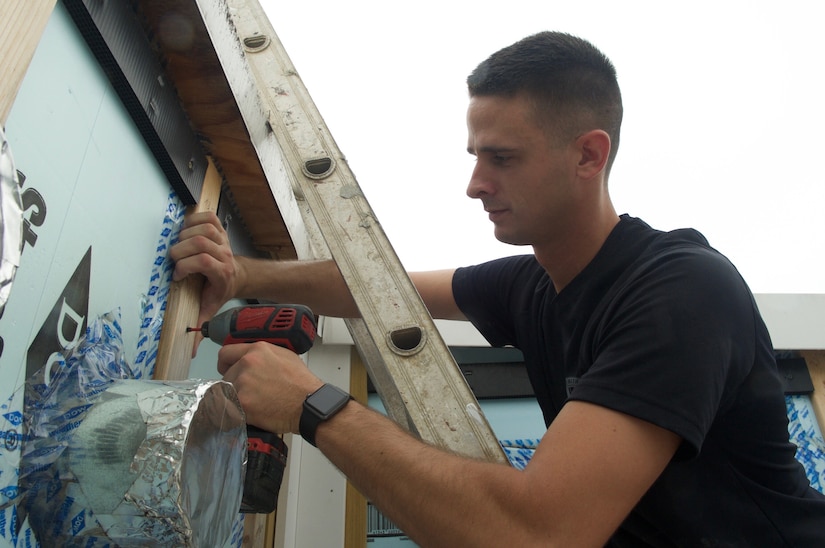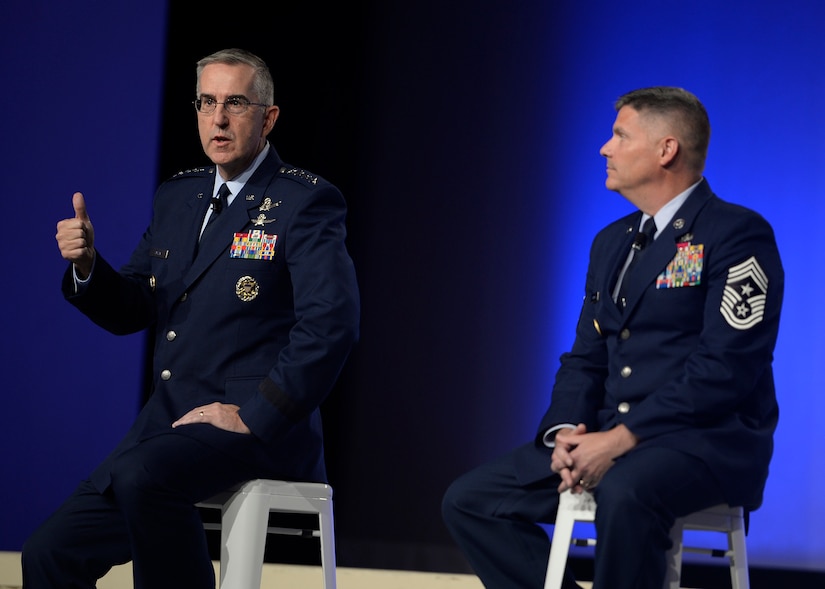By Navy Petty Officer 2nd Class Everett Allen, Defense Media
Activity
WASHINGTON -- Massive flooding, forest fires, earthquakes
and other natural disasters devastate thousands of families and homes each year
around the world. Members from all branches of the U.S. military help to give
relief from many of these events by providing aid through humanitarian
missions.
However, not all humanitarian efforts from our troops follow
a natural disaster, and not all of them happen overseas.
With sounds of power drills, hammers and coordinated shouts
flying through the air, 27-year-old Air Force Senior Airman Daniel Eury Jr.,
from Concord, North Carolina, is found spending his time helping to build
homes.
“I volunteer and help build homes with Habitat for Humanity
in Washington, D.C.,” Eury said. “I just really enjoy doing it. I enjoy getting
out and helping where I can, and I like the part where I interact with the
community.”
While drilling a screw into a wooden panel on a house he’s
helping to build, Eury explained where his desire to volunteer with Habitat for
Humanity came from.
Positive Impact
“After I joined the Air Force in 2015, I wanted to continue
what I had started back in 2011 when I used to volunteer with them,” he said.
“I wanted to keep making a positive impact on people in the community. So
that’s why I decided to go with Habitat for Humanity again. And I liked the
change of pace from my usual duties. I really enjoy going out and doing
different things. Each day, on the given volunteer site, we do something
different.”
Eury serves on the Air Force Honor Guard at Joint Base
Anacostia-Bolling here.
Between his time volunteering with Habitat for Humanity in
2011 and joining the Air Force in 2015, Eury took his volunteer work somewhere
completely different from anywhere he had ever been before.
“I stepped out of college so that I could go to Africa for a
little while and do volunteer work there,” he said. “It was conservation work
for five weeks. We did ‘game drives’ through national parks, where we counted
animals to make sure everything was going well. We also took measurements of
grass and trees so that certain herds weren’t overused in certain areas. We
kept track of animal movements so that if we needed to, [we could] relocate or
introduce new animals to an area. It was all mostly to help maintain a balanced
ecosystem for the people and the animals.”
Not very long after joining the military, Eury was
determined to restart some of his old volunteering efforts.
“When I got up here to my current unit, I realized that I
missed volunteering,” he said. “So in the summer of 2017, I joined Habitat for
Humanity’s ‘open-build’ email list, but wasn’t able to go out on a job until
January, when my schedule allowed. I asked if they could work with me and my
schedule. My point of contact, Jan Lane, was super awesome with helping me out.
We coordinated days that would work with my schedule and days that would work
with her schedule, and we also worked to find out whether I was going to be a
volunteer or a crew leader.”
Eury then worked as a volunteer, and other volunteers and
workers noticed his efforts.
“He was very persistent about getting on here and
volunteering with us,” said Jan Lane, volunteer services coordinator for
Habitat for Humanity of Washington, D.C. “He’s one of our best. He does great
work. He’s quite reliable, and we are glad to have him on our team.”
Leadership in Action
Lane said that Habitat for Humanity and AmeriCorps are two
separate organizations, but they often work alongside each other. Not long after
Eury’s volunteer work with Habitat for Humanity began, his AmeriCorps
counterparts took notice of his leadership quality.
“[They] suggested to Jan that I fill out the application to
become a crew leader,” Eury said. “And now, that’s what I do. It is still
volunteering, but I can now lead other individuals.”
Eury fills a leadership role in both his volunteer duties
and his professional duties.
“Working here at the Air Force Honor Guard, I am an
instructor for our technical training course,” he said. “For me, I don’t really
do my volunteer work for my leadership or command. I do it because it helps me
to become a better-rounded person.”
Eury said he does want to inspire people to be proactive
with volunteering. He stressed the importance of helping to make a positive
difference.
“I hope that I inspire other people,” he said. “I actually
want to get a group of volunteers from my unit to go out when Habitat has open
slots or ‘open group-builds.’ We should all be volunteering. And we shouldn’t
do it because we need to put a check mark in the box. We should do it for a
bigger reason than just us and our personal well-being.”
Sweeping up the last few dust pans of saw and concrete dust,
Eury expressed what he would tell others who are considering doing volunteer
work.
“I would tell people my reason for doing it -- it’s fun,
it’s a change of pace, and it’s helping others out. It is a win-win all
around.”









